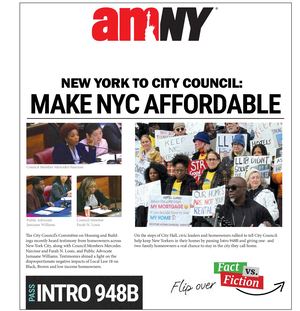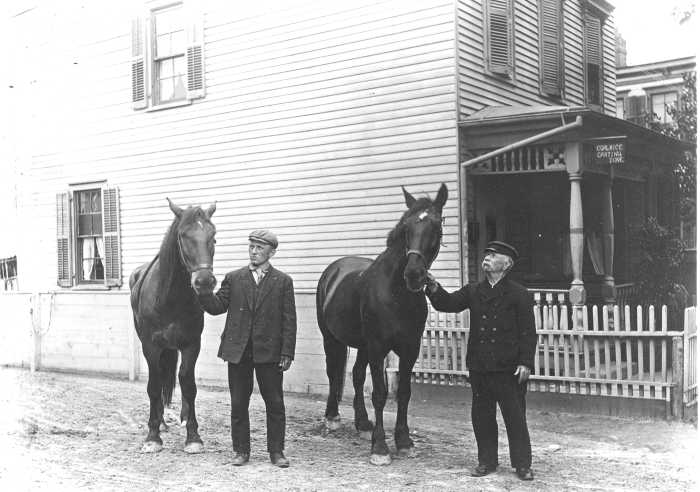Time for progress at SPURA!
To The Editor:
Re “Time for justice at Seward Park Urban Renewal Area” (talking point, by Joel Feingold, Jan. 20):
The saga of the Seward Park Urban Renewal Area has come to a climax with Community Board 3 voting this Monday night on guidelines for a mixed-use development that would replace dilapidated parking lots with multi-income housing, retail properties, green spaces, cultural/educational institutions and more. The future of SPURA impacts everyone on the Lower East Side. As a Grand St. resident and founder of SHARE (Sustainable Housing and Retail Expansion), I believe the guidelines will prove most beneficial to our neighborhood and therefore warrant the community’s support.
The empty SPURA sites were once a community of diverse residents and shops. The guidelines envision a future where an active neighborhood exists once again. However, some are opposing the development guidelines for allocating half of the housing for affordable units by invoking images of failed public housing projects. This concept is not what the guidelines propose. Housing for low-, moderate- and middle-income levels is included, reminiscent of the multi-income residents that make up the Grand St. co-ops — plus, a full 50 percent allocation for market-rate units. Also, the way affordable housing is built today is vastly different from how it was built years ago. Nowadays, developers take advantage of tax benefits to erect “80/20” buildings, a co-existing mix of 80 percent market-rate and 20 percent affordable units, which would be the template for a SPURA development.
We should note that while a 50 percent affordable housing allocation is too little for some residents, for others who see the neighborhood as already containing significant amounts of affordable housing, this number is too high. The debate over how much affordable housing should be built on SPURA has been argued for decades now. If we want to continue this argument for decades more, that is an option. But it will not do anything to address the real and varied needs of our community in the near term, and will definitely cause everyone to lose out for the foreseeable future. The current mix of housing is fair to all parties and politically realistic. Let’s not make the perfect the enemy of the good.
Some have argued that selling the SPURA lots at anything less than market value is reason alone to oppose the guidelines. However, the SPURA sites adjacent to Grand St. are owned by the Department of Housing, Preservation and Development, whose mission is to build housing, not maximize income from city-owned property. The city’s overall goal would realize enormous economic benefits for the city and the Lower East Side in the long term from taxes collected on the creation of new jobs and housing.
Why, as some suggest, would we want to sell this land for maximum profit and build housing in the outer boroughs when that money and infrastructure can be invested right here in our neighborhood? Also worth noting are studies that have demonstrated how mixed-income developments like the one proposed on SPURA have a neutral-to-positive effect on nearby property values.
We should feel satisfied that the process of arriving at these guidelines included community input every step of the way. The wants and needs of our diverse community were considered in the formation of these balanced and sensible guidelines, and we will continue to have a hand in influencing the design and character of SPURA as this process unfolds. If the option existed to simply sell the SPURA land to the highest bidder, do we really think that the developer would consider the community’s input in such a meaningful way?
The opportunity to finally develop SPURA means the Lower East Side will gain vibrant, new neighborhood assets for all to use, rather than us having to endure more years of blighted lots. Just as the Grand St. co-ops themselves advanced a 19th-century neighborhood into the 20th century, so too can a dynamic SPURA development bring the Lower East Side into the 21st century and create a more prosperous future for all of our residents.
Brett Leitner
Leitner is founder, SHARE (Sustainable Housing and Retail Expansion)
Commends Mendez
To The Editor:
Re “Mendez’s asthma-free act is law” (Your Health article, Jan. 20):
Congrats to the councilwoman! I used to live in Greenwich Village, and I hope that this kind of legislation takes hold all over the country. These types of places are why childhood asthma is so prevalent in the U.S., and shady landlords are definitely part of the problem.
Nick Smith
E-mail letters, not longer than 250 words in length, to news@thevillager.com or fax to 212-229-2790 or mail to the East Villager, Letters to the Editor, 145 Sixth Ave., ground floor, NY, NY 10013. Please include phone number for confirmation purposes. The East Villager reserves the right to edit letters for space, grammar, clarity and libel. The East Villager does not publish anonymous letters.



































